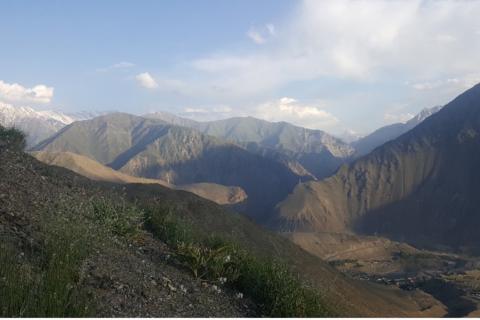The Land Portal published a new country portfolio for Tajikistan as part of our Country Insights initiative. The initiative seeks to expand knowledge about how countries govern their land, the challenges they face, and the innovative solutions they find to manage land tenure issues.
Tajikistan is a land-locked country known for its rugged terrain. Mountains cover over 93% of the 140,000 km2 land area. There are great differences in land use patterns and farming structures throughout the country due to extreme diversity in agro-climatic characteristics. Resource use is dominated by two river systems (the Amu Darya/Panj and Syr Darya) and subsidiary rivers that feed water to users in the different valleys.
Under Soviet rule, the country’s agrarian economy developed significantly, as new areas of land were brought into production, enabled by the construction of large irrigation systems. Large parts of the population were resettled from highlands to lowlands to satisfy the labour demand for the newly set up state and collective farms, which were, in the lowland valleys, mainly oriented towards cotton production. Since 1991, the year in which Tajikistan became an independent republic, the agricultural sector has gradually decreased in importance, but together with the forestry sector it still represents almost 20% of the country’s GDP. Over half of the population officially resides in the countryside and depends on farming for their livelihood. In 2019, the population stood a little over 9.3 million people.
Independence in 1991 was followed by a violent civil war from 1992-7, which caused substantial loss of life as well as the internal displacement of over 1 million people. The war also resulted in a significant overhaul of access to landed property, with consequences that mark society until today. Since the end of the conflict, power has been consolidated under a deepening authoritarian regime, headed by president Emomali Rahmon, which controls the key sectors of the economy, including cotton production.
Land legislation and regulations
Agrarian transformation was set in motion in the early 1990s. The 1992 Law on Land Reform called for the dismantling of large state farms. The 1992 Law on Dehqon Farms provided rural dwellers the right to establish a farm and to obtain inheritable land use rights. The 1994 Constitution affirmed state ownership over land and natural resources. The Land Code of 1996 then established a guiding legal framework for land. It provided rules to protect usage rights and recognised the ability to transfer, mortgage and sub-lease land shares. Pastureland was ascribed the same status and regulatory framework as arable land, now collectively termed as agricultural land. However, there remains a gap between law in theory and law in practice, so that tenure security on paper does not match that on the ground.

